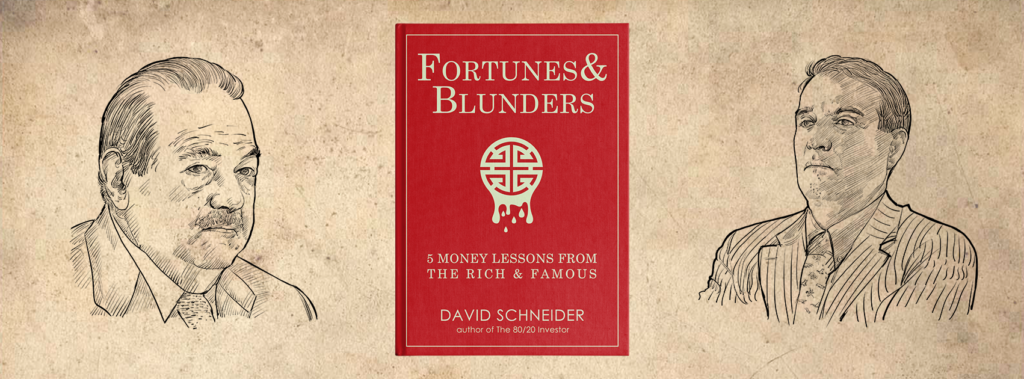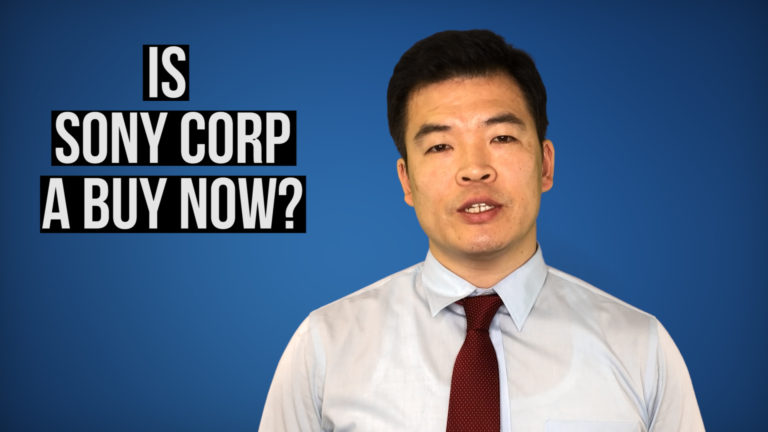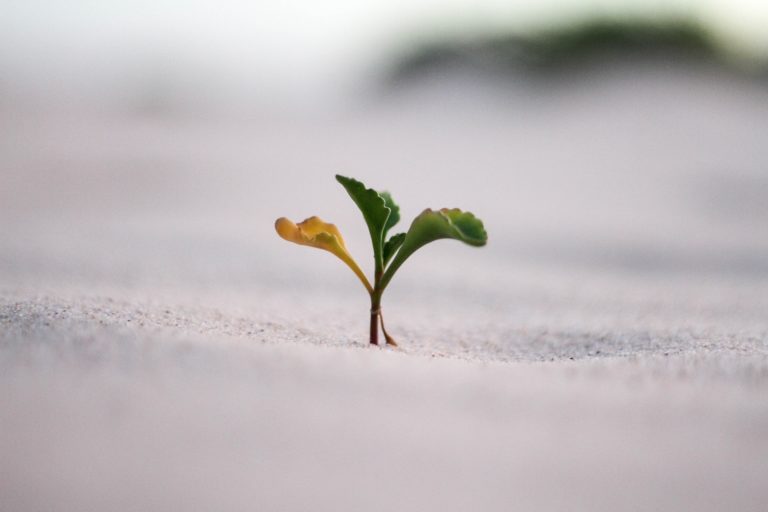Eike Batista—The Brazilian Icarus
“You cannot exist as a $20 billion company with speculation.”—Eike Batista

To many, he is the face of Brazilian capitalism, but for others, he is an eccentric, self-confessed megalomaniac. Controversy follows Eike Batista like a tail-wagging puppy.
He was once the richest man in Brazil—one of the most promising entrepreneurs of the world with a net worth of over $30 billion, ranking him at number 7 on the list of richest people in the world. He was included in the “50 Most Influential People in Global Finance” list in Bloomberg Markets. Eike Batista once famously boasted that he would overtake Mexico’s Carlos Slim to become the world’s richest man by 2015.
He once had a fleet of luxury supercars, collecting them like children collect matchbox cars. He was married to a beautiful wife, but still enjoyed plenty of romantic entanglements with the sort of supermodels for which Brazil is famous. Even his prized possessions, his cars, shared his luxurious lifestyle, firstly his Mercedes and then his Lamborghini, parked not in the spacious garage, but in his living room. According to a tabloid magazine, he dined with the likes of Madonna and drank vintage champagne like water.
Eike Batista had it all. He was on the top of the world, admired as one of the few persons “whose comments move markets; whose deals set the value of companies or securities; whose ideas and policies shape corporations, governments and economies.”[i]
Yet today, he finds himself with a mountain of unpaid debt, possibly totaling more than $1 billion. He recently served a term in prison for bribery and perjury, seeing out his time in one of Brazil’s most notorious prisons. He has been battling more lawsuits than a normal mortal could even imagine. Finally, he became entangled in corruption scandals, which formed a part of the much larger political troubles in Brazil. It’s very unlikely that at age 63 he will ever return to his old glorious heights.
What had happened to a man who, like Carlos Slim, should have been destined as an elder statesman and representative of his country? A country that has been striving for more international respect and recognition, hosting the Olympic Games in 2012 and the World Cup in 2014. But, just like his native country in recent times, something seriously went wrong, and his life fell into a tailspin. In this biography, we will dive deeper into a life of risky deal-making, fast cars, luxurious boats and, finally, total ruin.
Upbringing and Career
Eike Batista did not receive any inherited wealth. As he so many times emphasized, he was a “self-made” man. A man who built his wealth because of his own vision and boldness and his ability to develop and build important connections.
Eike Fuhrken Batista da Silva was born on November 3rd, 1956 in Minas Gerais, Brazil. Batista was the second of seven children. His parents were Eliezer Batista and Jutta Fuhrken, a native of Germany.
His father was an influential bureaucrat and important corporate director. As president of a state enterprise and former Minister of Mines and Energy in the João Goulart and Fernando Collor administrations, he provided a combination of political influence and upper-middle income for his family.
After spending his childhood in Brazil, Batista and his family moved to Europe, where his father’s work took the whole family. As a teenager, he would spend his formative years together with his family in Geneva, Düsseldorf, and Brussels. When his father was called back to Brazil, Batista decided to stay behind and study at the prestigious engineering University of Aachen in Germany (RWTH Aachen), where he obtained a degree in metallurgical engineering. While he failed to complete his course, it still gave him the necessary training and theoretical knowledge that would underpin the start of his first business endeavor in Brazil.
When he returned to Brazil in 1979, he started out as a commodities trader, trying to export granite, marble and diamonds, and collecting commissions in the process. But in the early 1980s, another commodity caught his attention—gold. During this period, Brazil was under military rule and the Brazilin economy was both depressed and suffering from hyperinflation. In such circumstances, gold was in high demand. Seizing the opportunity, he turned into a dedicated gold trader. It was the right call and demonstrated the perfect timing of a master magician.[ii]
That year, he convinced two gold traders in Rio de Janeiro to invest $500,000 in his new enterprise, one which saw him organize shovel miners in the Amazon to dig for gold. With the seed money, he started his own gold trading firm, “Autram Aurem,” when he was just 23 years old—and this would become his first big break. At that age, he already had plenty of experience from trading other commodities, and he knew how to deal with and organize a rough group of garimpeiros (shovel miners).
He made a killing mining and selling gold, and he quickly racked up profits of about $60 million within less than two years. For his efforts, he took a 10 percent cut and thereby became instantly rich. It would be the beginning of a glorious growth story and a confirmation of Eike Batista’s conviction in the enormous wealth Brazilian natural resources had to offer to a man who held vision and ambition.
With the money he had made, he bought a mine and industrialized it. He gave it the name “TVX Gold.” Supposedly, the X in the name stands for “multiplication,” implying the multiplication of wealth. The mine he selected apparently turned out to be “idiot-proof” (as he later recalled). The phrase meant that it was enormously profitable no matter whatever the situation. It was a time of easy pickings for a man of his organization, skills and dash of daring.
TVX was just the beginning. In 1983, Batista founded the EBX Group, his future holding company and vehicle of choice under which he would organize all his future acquisitions and business dealings. But before the fantastic rise of the EBX Group, Batista got his first taste of adverse commodity price movement with TVX Gold itself.
Since acquiring the mine and renaming it to TVX Gold, Batista had created eight gold mines in Brazil and Canada, along with a silver mine in Chile. Six years on in his endeavors, he would be named CEO of the company he listed on the Canadian Stock Exchange. His work with this provided a valuable experience he later replicated several times over. But not all went along as planned, and being a public company, he had to get used to more interference and scrutiny by investors as matters began to turn against him. It was not a situation he was used to.
In search of new mines to add to his growing conglomerate, Batista found an opportunity in Greece. But this time he over-dealt his hand; the mining business has never been for the faint-of-heart, even less so for the risk-averse investor. Eike Batista was neither of these. Perhaps he soon wished he shared some of the traits of such people. His aggressive acquisition plans for a gold mine in Greece went awry amid political opposition and internal disagreements between his business associates from Greece and Russia and him. The Brazilian was outmaneuvered in a power struggle and was denied an environmental license from the Greek government for his mining project. He was left with a mountain of debt. He had invested heavily in preparation for taking on the mine and received the additional blow of gold prices falling to the historically low levels of below $300 per ounce.
His gold mining days were over! He had no choice but to resign as CEO and chairman of TVX Gold. He was no longer in charge of the company he founded—the company which marked the beginning of his success. Mr. Batista resigned in 2001, after his cash-strapped producer was forced to put itself up for sale. Soon after, TVX was bought out by Kinross Gold Corporation at fire sale prices. The value of gold then quickly recovered, once again reaching historic extremes—achieving a figure of nearly $2,000 per ounce in 2011.
After the debacle at TVX Gold, his attention returned to Brazil and to EBX. This was his early investment vehicle that he founded back in 1983. Between 2004 and 2012, he added six public companies under the EBX umbrella, including MPX (energy generation), MMX (mining), LLX (logistics), OSX (shipbuilding), and finally OGX (oil and gas), among many other acquisitions. Among these key procurements, OGX was by far the most important. It was soon to become his new cash engine—a jewel in the crown of his corporations that would catapult him into the company of the top 10 billionaires in the world.
How he financed such a spree of purchases after a major failure with TVX might be a mystery for the bystander, but the explanation for his continued success is quite simple. 2001 might have been the low point of gold prices and a year of temporary setback for Batista, but as the saying goes—double or nothing. This time, luck was on his side once more, and as the investment adventurist Jim Rogers observed, “It was the beginning of a major cycle in commodities.”
What helped Eike Batista to recover quickly was the performance of the assets he still owned and controlled—either himself or through his business network. Throughout his failure with TVX, he retained his charm and his salesmanship. He continued to gamble, albeit with other people’s money. But they were quite happy to place their wealth in his hands—such was the confidence in his abilities.
With the change of the commodity megacycle, Batista floated shares from his conglomerate EBX through the BOVESPA stock exchange, the same schematics he learned and used with TVX Gold. With that, he had plenty of money with which to gamble… and gamble he did.
With the new commodities bull market raging, domestic and international investors caught the buying frenzy and bought everything from Batista they could lay their hands on. In this way, EBX was in a position to get capital, with debt holders and equity holders financing all its acquisitions from 2004 up until 2011.
In 2008, he was able to sell shares in MMX’s three mines to Anglo American. He earned $5.5 billion in the process. A handy payout of pocket money! However, financial analysts speculate that this deal was more expensive than it might have been; indeed, it is reported to be one of his biggest deals. A sale of 22% of shares in MMX to China’s Wuhan Iron and Steel for $400 million, and $700 million worth of MMX shares sold to South Korea’s SK Networks together made him a fortune without having even extracted an ounce of iron ore.
He was earning substantial sums from mining, oil and gas production, shipbuilding, logistics and energy. Then, in 2008, he put together another plan, correctly predicting the public disclosure of massive land deposits of oil reserves in his homeland.
His luck continued when these oil blocks were reserved for other investors. Eike Batista made a fortune on the back of this investor frenzy between 2006 and 2010. Even following the Government directive regarding foreign investors, Batista continued to do well. He enlisted the help of OGX’s former head of exploration, Paulo Mendonca, and made his own bid for oil blocks.
The bid was successful, with permission being granted to begin production in 21 flat deposits. This success turned OGX into the largest privately-owned oil entity in Brazil. Later that year, the company announced that it was aiming to produce more than one million barrels of oil a day by 2019. That figure would account for almost half of Brazil’s total oil output.
The firm was indexed on the stock exchange in 2008, raising investment funds of $4.3 billion, a record for the time. Batista was raking it in.[i]
He had high dreams and grand visions for his growing empire. He was planning to build a “super port” in Rio de Janeiro, to be completed by 2013. It would be a hub—indeed, the hub—where the import and export of minerals and oil could take place. In many ways, his plans were to create a port similar to Houston’s oil refinery sites. He was also quoted as “hoping to accumulate approximately $100 billion during the next decade.”[ii]
By 2011, EBX reached a market capitalization of over $40 billion. Eike Batista became the eighth richest man on the planet. It would mark the high point for Batista, as he wallowed in fame and glory. He was on his way to becoming a national hero and superstar in Brazil.
Spending: A Man Who Enjoys His Wealth
With these lucrative deals under his belt, Batista proclaimed that he would be the richest man in the world in 2015 and be worth $100 billion by 2020; underpinning this would be his companies’ $1.5 trillion of “underlying assets,” which included the speculated amounts of mineral assets he owned in Mongolia.[i]
With his wealth regained and entranced by his tendency towards publicity stunts, the media attention came, and that made him the iconic business guru he once was. But what really touched common Brazilians was his private life. He became what could be seen in today’s terms as a kind of early internet viral success. In his way, he was as big a name as the soccer superstars that make Brazil the most exciting association soccer playing nation in the world.

When the news broke that he had become romantically entangled with supermodel, actress and carnival dancer Luma de Oliveira, the liaison became an instant sensation. According to the Brazilian version of People, the couple met in 1990 and were at the height of their romance. For Brazil, they were the Brazilian version of Brangelina, as they filled the gossip magazine’s front pages issue after issue. Going forward, the media would have plenty to report about Batista’s celebrated private life in coming years.
Being a media darling comes with certain obligations to justify such high standing. Eike Batista, with his renewed wealth and fortune, once more began living the high life—he could afford it. He diversified into his love of power boating, winning several championship titles. Yachts, private jets and luxury mansions in Brazil’s top spots (and the world over) also featured in his portfolio. One of his early prized possessions was a $1.2 million Mercedes-Benz SLR McLaren—the same one that he placed in his living room so that he could enjoy the beautiful lines of the car while watching soccer or the news. He added several more luxury cars in his growing fleet, including a white Lamborghini Aventador that would replace the Mercedes a few years later.
To make gossip columns even happier, Batista’s marriage was followed by a messy divorce. During the divorce proceedings, it came out that he had affairs with a string of famous Brazilian socialites and supermodels. His marriage had lasted only 4 years. The couple had two children together, Thor and Olin.
Nevertheless, Batista was a man unaffected by his personal dramas. On the contrary, they increased his social following. Over the years, he proudly showed off his wealth. He traveled the world in his $61 million Gulfstream jet, gathering an eager entourage of loyal followers, each keen to hear his teachings. He was the J. Paul Getty of his day, the Donald Trump of his time, using whatever media was popular during those years to convey his story.
But there was a plan behind Eike Batista’s actions. They were not simply there to massage the ego of a super-rich man, or self-indulgence he was in a position to play out. With his frequent appearance in gossip columns and business interviews to proclaim his grand visions, he remained relevant to the public and business community. Banks loved him, many of them investing their own money in his projects. Stock dealers and other investors purchased and promoted everything that came out of Batista’s financial behemoth.
The upshot of this media circus was that OGX had access to credit lines and cheap capital, helping it to expand aggressively. Interest came from both international and domestic banks, especially through BNDES, which lent OGX close to R$10.4 billion ($4.5 billion).[ii]
Once again, his salesmanship and personal charisma proved to be decisive, but this particular approach to business was coming to the end of its useful life. This would prove to be the last time his charm offensive and celebrity lifestyle would work and convince creditors and investors alike that his business interests were worth their time and money. Eike Batista was about to plunge downhill at speed Brazil’s business elite had never seen before.
The Higher You Rise, the Further You Fall
All good times come to an end, and Batista’s high life was finally up. But fitting with his flamboyant existence, he was about to go out with a bang, one that Bloomberg News would later call the “Perfect Storm.”
The first signs of financial distress came in early 2012, when Batista was actively searching for partners to team up with on various project within his holding companies. Similar to Enron finding a last-minute sucker or former Secretary Henry Paulson convincing Singapore’s sovereign wealth fund to inject money into Merrill Lynch before their imminent bust, Batista searched for last-minute investors. He found them in Abu Dhabi and Germany.
He quietly negotiated with the Abu Dhabi sovereign wealth fund Mubadala to inject $2 billion for a 5.63% share in his EBX conglomerate. The investment really helped to back a valuation for EBX of about $35 billion, but only temporarily. Next, he negotiated a similar deal with German’s giant utility company EON to take a stake in MBX. All this happened shortly before his entire business structure collapsed.
What initiated Batista’s awkward financial position, leading him to give up more and more control of his empire, was a drama that took place at OGX, that crown jewel in the EBX holding structure.
Back in 2011, OGX claimed an early success rate in exploratory wells of more than 90%, initially valuing its oil deposits at more than $1 trillion. Even back then, there were already concerns regarding the validity of his oil reserve estimates. Large oil companies like BP and Exxon stayed well clear of Batista’s business. But he had other routes to money, such as bonds, and the entrepreneur was not concerned.
Then, in 2012, further explorations and tests confirmed that the oil he had discovered was locked in a complex subsea geologic formation that made it difficult to pump out. As a result, OGX adjusted its declaration of workable sites from 90% to 87%, claiming wrongly that this high percentage of its assets would still be able to produce viable quantities of oil. This was a blatant misrepresentation of the truth, or in other words, a well-calculated lie.





